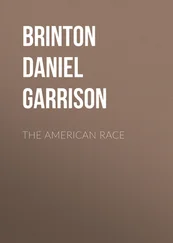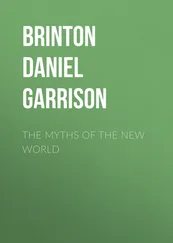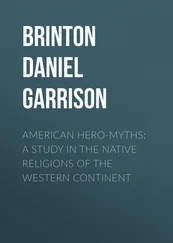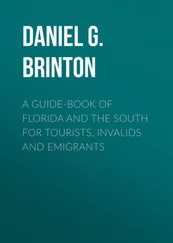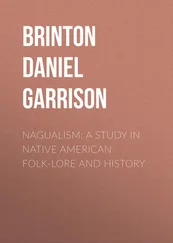Daniel Brinton - The Lenâpé and their Legends
Здесь есть возможность читать онлайн «Daniel Brinton - The Lenâpé and their Legends» — ознакомительный отрывок электронной книги совершенно бесплатно, а после прочтения отрывка купить полную версию. В некоторых случаях можно слушать аудио, скачать через торрент в формате fb2 и присутствует краткое содержание. Жанр: foreign_antique, foreign_prose, на английском языке. Описание произведения, (предисловие) а так же отзывы посетителей доступны на портале библиотеки ЛибКат.
- Название:The Lenâpé and their Legends
- Автор:
- Жанр:
- Год:неизвестен
- ISBN:нет данных
- Рейтинг книги:4 / 5. Голосов: 1
-
Избранное:Добавить в избранное
- Отзывы:
-
Ваша оценка:
- 80
- 1
- 2
- 3
- 4
- 5
The Lenâpé and their Legends: краткое содержание, описание и аннотация
Предлагаем к чтению аннотацию, описание, краткое содержание или предисловие (зависит от того, что написал сам автор книги «The Lenâpé and their Legends»). Если вы не нашли необходимую информацию о книге — напишите в комментариях, мы постараемся отыскать её.
The Lenâpé and their Legends — читать онлайн ознакомительный отрывок
Ниже представлен текст книги, разбитый по страницам. Система сохранения места последней прочитанной страницы, позволяет с удобством читать онлайн бесплатно книгу «The Lenâpé and their Legends», без необходимости каждый раз заново искать на чём Вы остановились. Поставьте закладку, и сможете в любой момент перейти на страницу, на которой закончили чтение.
Интервал:
Закладка:
CHAPTER II
The Wapanachki or Eastern Algonkin Confederacy
The Confederated Tribes – The Mohegans – The Nanticokes – The Conoys – The Shawnees – The Saponies – The Assiwikalees
All the Algonkin nations who dwelt north of the Potomac, on the east shore of Chesapeake Bay, and in the basins of the Delaware and Hudson rivers, claimed near kinship and an identical origin, and were at times united into a loose, defensive confederacy.
By the western and southern tribes they were collectively known as Wapanachkik – "those of the eastern region" – which in the form Abnaki is now confined to the remnant of a tribe in Maine. The Delawares in the far West retain traditionally the ancient confederate name, and still speak of themselves as "Eastlanders" — O-puh-narke . (Morgan.)
The members of the confederacy were the Mohegans (Mahicanni) of the Hudson, who occupied the valley of that river to the falls above the site of Albany, the various New Jersey tribes, the Delawares proper on the Delaware river and its branches, including the Minsi or Monseys, among the mountains, the Nanticokes, between Chesapeake Bay and the Atlantic, and the small tribe called Canai, Kanawhas or Ganawese, whose towns were on tributaries of the Potomac and Patuxent.
That all these were united in some sort of an alliance, with the Delawares at its head, is not only proved by the traditions of this tribe itself, but by the distinct assertion of the Mohegans and others, and by events within historical times, as the reunion of the Nanticokes, New Jersey and Eastern Indians with the Delawares as with the parent stem. [17] Footnote_17_17 Heckewelder, History of the Indian Nations , p. 60, and Narrative of Hendrick Aupaumut , 1791, in Mems. Hist. Soc. Pa. , Vol. II. The latter, himself a native Mohegan, repeatedly refers to "the ancient covenant of our ancestors," by which this confederacy was instituted, which included the "Wenaumeew (Unami), the Wemintheew (Minsi), the Wenuhtokowuk (Nanticokes) and Kuhnauwantheew (Kanawha)." From old Pennsylvania documents, Proud gives the members of the confederacy or league as "the Chiholacki or Delawares, the Wanami, the Munsi, the Mohicans and Wappingers." History of Penna. , Vol. II, p. 297, note. Compare J. Long, Voyages and Travels , p. 10 (London, 1791), who gives the same list. Mr. Ruttenber writes: "In considering the political relations of the Lenapes, they should be considered as the most formidable of the Indian confederacies at the time of the discovery of America, and as having maintained for many years the position which subsequently fell to the Iroquois." — Indian Tribes on Hudson River , p. 64.
The Mohegans, Mo-hé-kun-ne-uk , dwelt on the tide-waters of the Hudson, and from this their name was derived. Dr. Trumbull, indeed, following Schoolcraft, thinks that they "took their tribal name from maingan , a wolf, and Moheganick = Chip. maniganikan , 'country of wolves.'" [18] Footnote_18_18 Trumbull, Indian Names in Connecticut , p. 31. Schoolcraft had already given the same derivation in his History and Statistics of the Indian Tribes .
They, themselves, however, translate it, "seaside people," or more fully, "people of the great waters which are constantly ebbing or flowing." [19] Footnote_19_19 Capt. Hendricks, in Mass. Hist. Soc. Colls ., Vol. IX, p. 101.
The compound is machaak , great, hickan , tide ("ebbing tide," Zeis; "tide of flood," Campanius) and ik , animate plural termination.
The Mohegans on the Hudson are said to have been divided into three phratries, the Bear, the Wolf and the Turtle, of whom the Bear had the primacy. [20] Footnote_20_20 Ruttenber, History of the Indian Tribes of Hudson's River , p. 50.
Mr. Morgan, however, who examined, in 1860, the representatives of the nation in Kansas, [21] Footnote_21_21 Morgan, Ancient Society , pp. 173-4.
discovered that they had precisely the same phratries as the Delawares, that is the Wolf, the Turtle, and the Turkey, each subdivided into three or four gentes. He justly observes that this "proves their immediate connection with the Delawares and Munsees by descent," and thus renders their myths and traditions of the more import in the present study.
Linguistically, the Mohegans were more closely allied to the tribes of New England than to those of the Delaware Valley. Evidently, most of the tribes of Massachusetts and Connecticut were comparatively recent offshoots of the parent stem on the Hudson, supposing the course of migration had been eastward.
In some of his unpublished notes Mr. Heckewelder identifies the Wampanos , who lived in Connecticut, along the shore of Long Island Sound, and whose council fire was where New Haven now stands, as Mohegans, while the Wapings or Opings of the Northern Jersey shore were a mixed clan derived from intermarriages between Mohegans and Monseys. [22] Footnote_22_22 These opinions are from a MS. in the library of the American Philosophical Society, in the handwriting of Mr. Heckewelder, entitled Notes, Amendments and Additions to Heckewelder's History of the Indians (8vo, pp. 38.) Unfortunately, this MS. was not placed in the hands of Mr. Reichel when he prepared the second edition of Heckewelder's work for the Historical Society of Pennsylvania. An unpublished and hitherto unknown work on the Mohegan language is the Miscellanea Lingua Nationis Indica Mahikan dicta, curà scepta à Joh. Jac. Schmick , 2 vols., small 8vo.; MS. in the possession of the American Philosophical Society. Schmick was a Moravian missionary, born in 1714, died 1778. He acquired the Mohegan dialect among the converts at Gnadenhütten. His work is without date, but may be placed at about 1765. It is grammatical rather than lexicographical, and offers numerous verbal forms and familiar phrases.
The Nanticokes occupied the territory between Chesapeake Bay and the ocean, except its southern extremity, which appears to have been under the control of the Powhatan tribe of Virginia.
The derivation of Nanticoke is from the Delaware Unéchtgo , "tide-water people," and is merely another form of Unalachtgo , the name of one of the Lenape sub-tribes. In both cases it is a mere geographical term, and not a national eponym.
In the records of the treaty at Fort Johnston, 1757, the Nanticokes are also named Tiawco . This is their Mohegan name, Otayãchgo , which means "bridge people," or bridge makers, the reference being to the skill with which the Nanticokes could fasten floating logs together to construct a bridge across a stream. In the Delaware dialect this was Tawachguáno , from taiachquoan , a bridge. The latter enables us to identify the Tockwhoghs, whom Captain John Smith met on the Chesapeake, in 1608, with the Nanticokes. The Kuscarawocks , whom he also visited, have been conclusively shown by Mr. Bozman [23] Footnote_23_23 J. Bozman, History of Maryland , Vol. I, pp. 112, 114, 121, 177. This laborious writer still remains the best authority on the aboriginal inhabitants of Maryland.
to have been also Nanticokes.
By ancient traditions, they looked up to the Lenape as their "grandfather," and considered the Mohegans their "brethren." [24] Footnote_24_24 "The We nuh tok o wuk are our brothers according to ancient agreement," Journal of Hendrick Aupaumut, Mems. Hist, Soc. Pa. , Vol. II, P. 77.
That is, they were, as occasion required, attached to the same confederacy.
In manners and customs they differed little from their northern relatives. The only peculiarity in this respect which is noted of them was the extravagant consideration they bestowed on the bones of the dead. The corpse was buried for some months, then exhumed and the bones carefully cleaned and placed in an ossuary called man-to-kump (= manito , with the locative termination, place of the mystery or spirit).
Читать дальшеИнтервал:
Закладка:
Похожие книги на «The Lenâpé and their Legends»
Представляем Вашему вниманию похожие книги на «The Lenâpé and their Legends» списком для выбора. Мы отобрали схожую по названию и смыслу литературу в надежде предоставить читателям больше вариантов отыскать новые, интересные, ещё непрочитанные произведения.
Обсуждение, отзывы о книге «The Lenâpé and their Legends» и просто собственные мнения читателей. Оставьте ваши комментарии, напишите, что Вы думаете о произведении, его смысле или главных героях. Укажите что конкретно понравилось, а что нет, и почему Вы так считаете.



